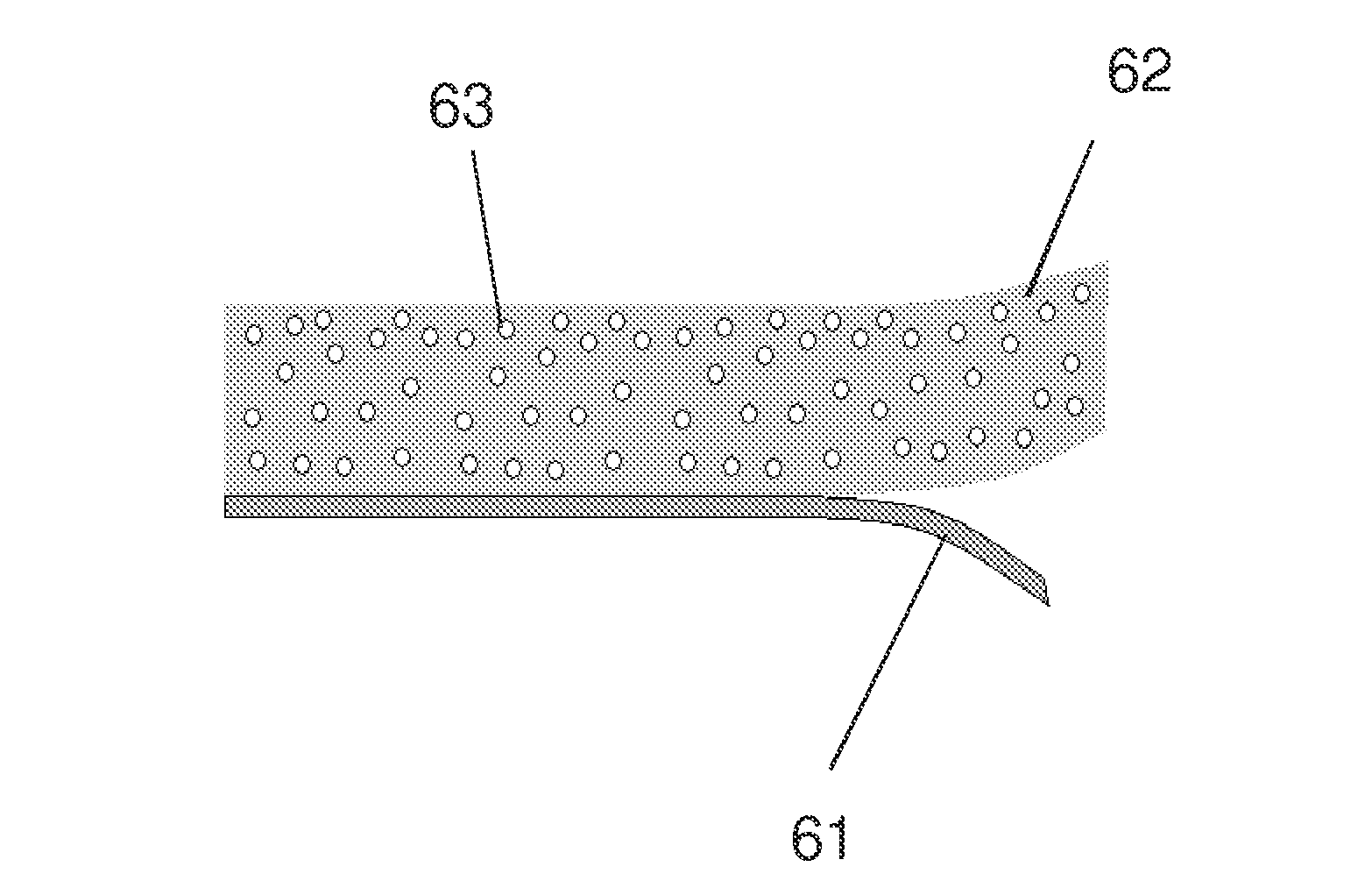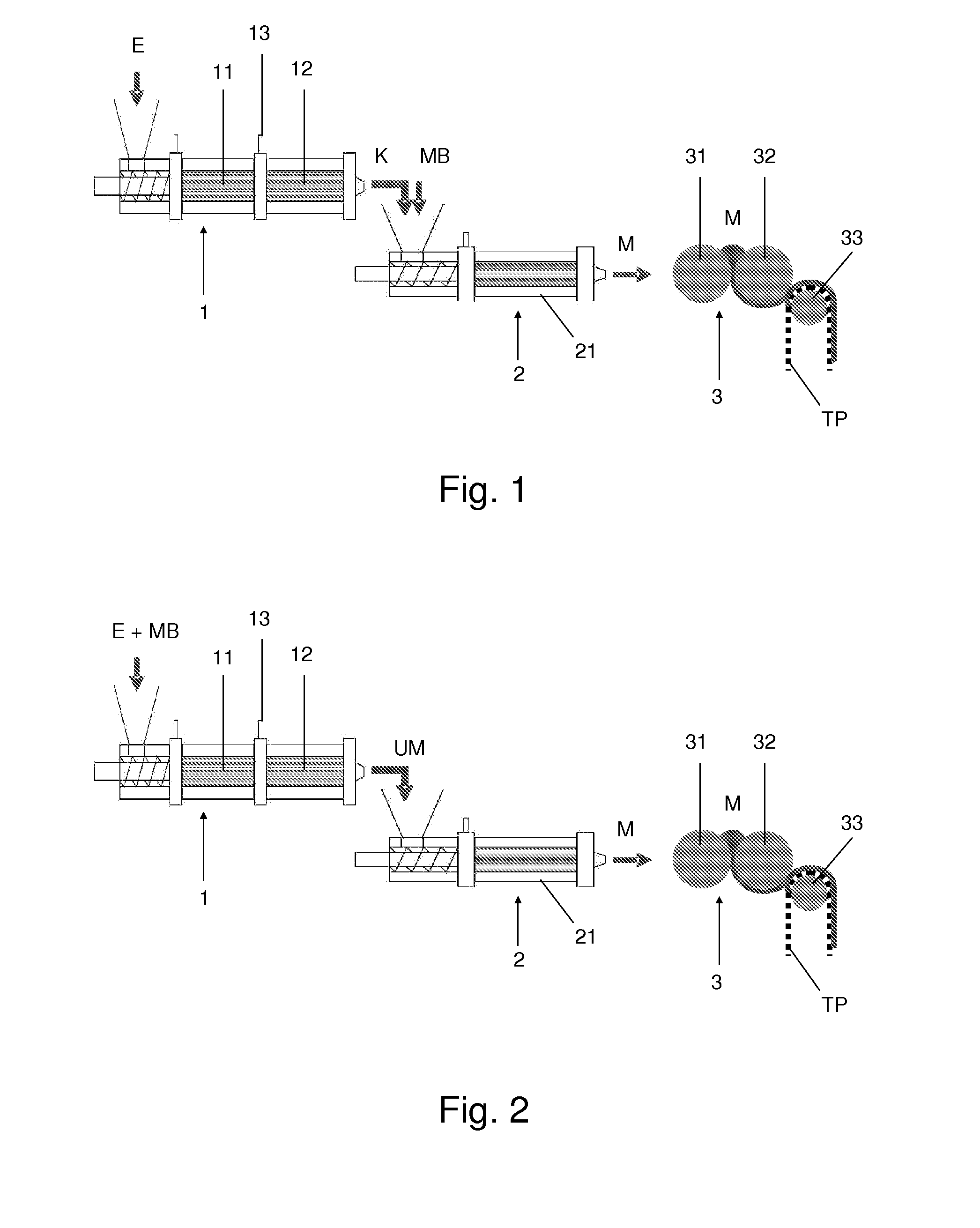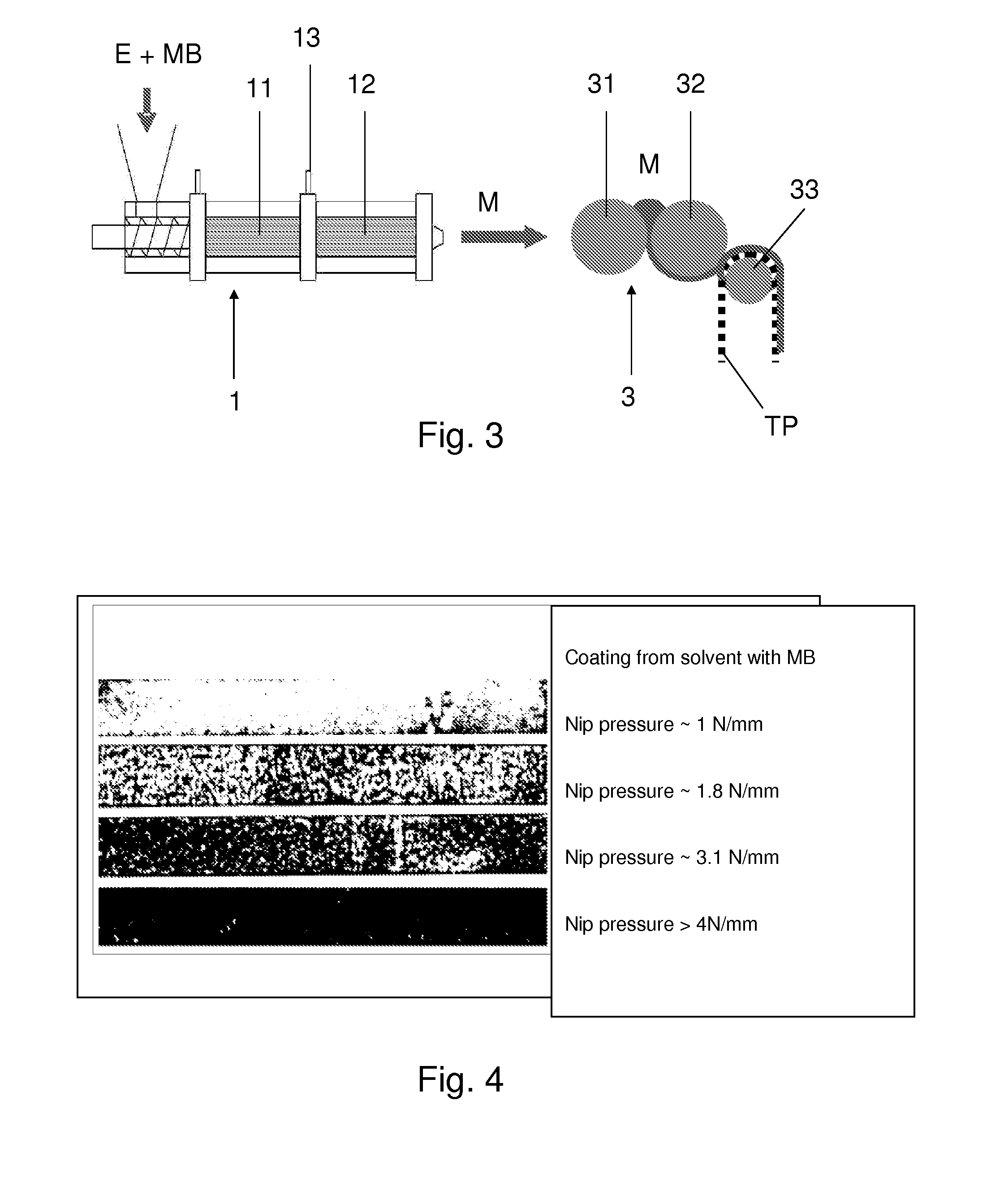Foamed adhesive, more particularly pressure-sensitive adhesive, process for the production and also the use thereof
a technology of adhesives and adhesive films, applied in the field of pressure-sensitive adhesives, can solve the problems of less than minimal recovery of adhesives when compressed to half their original thickness, more susceptible to irreversible collapse under pressure and temperature, and less than ideal for sealing materials
- Summary
- Abstract
- Description
- Claims
- Application Information
AI Technical Summary
Benefits of technology
Problems solved by technology
Method used
Image
Examples
##ventive example 5
INVENTIVE EXAMPLE 5
[0220]Composition formula based on natural rubber:
Rubber SVR 3L47.5% by weightPiccotac 1100-E47.5% by weightExpancel 051 DU 40 5.0% by weightPWE parameters:Temperature (2 heating zones) = 50° C.Temperature (central spindle) = 10° C.Temperature (die) =160° C.Speed (screws) =25 rpmESE parameters:Temperature (heating zone 1) = 20° C.Temperature (heating zone 2) = 60° C.Temperature (heating zone 3) =100° C.Temperature (heating zone 4) =140° C.Temperature (die) =140° C.Speed (screw) =62 rpmRoll applicatorTemperature (doctor roll) =130° C.parameters:Temperature (coating roll) =130° C.
[0221]Production takes place in a process as described in the disclosure relating to FIG. 1. The natural rubber and the Piccotac 1100-E resin are supplied in granule form to the planetary roller extruder, and compounded. The strand of composition thus homogenized, after exiting the die, is passed on into the feed zone of the single-screw extruder, and at the same time the microballoons are ...
##ventive example 6
INVENTIVE EXAMPLE 6
[0224]Composition formulas based on natural rubber:
A (unfoamed)B (foamed)Rubber SVR 3L49.5% by weight48.35% by weightPiccotac 1100-E49.5% by weight48.35% by weightExpancel 051 DU 40 2.3% by weightIrganox 1076 1.0% by weight 1.0% by weightPWE parameters:Temperature (2 heating zones) = 50° C.Temperature (central spindle) = 10° C.Temperature (die) =160° C.Speed (screws) =50 rpmESE parameters:Temperature (heating zone 1) = 20° C.Temperature (heating zone 2) = 60° C.Temperature (heating zone 3) =100° C.Temperature (heating zone 4) =140° C.Temperature (die) =140° C.Speed (screw) =68 rpmRoll applicatorTemperature (doctor roll) =130° C.parameters:Temperature (coating roll) =130° C.
[0225]Production takes place in a process as described in the disclosure relating to FIG. 1. The natural rubber and the Piccotac 1100-E resin are supplied in granule form to the planetary roller extruder, and compounded. The strand of composition thus homogenized, after exiting the die, is passe...
##ventive example 7
INVENTIVE EXAMPLE 7
[0228]Composition formula based on SIS:
Vector 411347.5% by weightPentalyn H-E47.5% by weightExpancel 051 DU 40 5.0% by weightPWE parameters:Temperature (2 heating zones and central 80° C.spindle) =Temperature (die) =130° C.Speed (screws) =50 rpmRoll applicatorTemperature (doctor roll) =140° C.parameters:Temperature (coating roll) =130° C.
[0229]Production takes place in a particularly advantageous process of the kind described in the disclosure relating to FIG. 3.
[0230]The styrene block copolymer vector 4113, the resin Pentalyn H-E, and the Expancel 051 DU 40 microballoons are supplied to the planetary roller extruder. Besides the compounding of the polymer matrix and the homogeneous distribution of the microballoons in the said matrix, the thermoplastic polymer casings of the microballoons are softened in the extruder at 140° C. and, on exit from the die or pressure compensation, the encapsulated isobutane expands and, consequently, the microballoons expand. Subse...
PUM
| Property | Measurement | Unit |
|---|---|---|
| surface roughness | aaaaa | aaaaa |
| diameter | aaaaa | aaaaa |
| diameter | aaaaa | aaaaa |
Abstract
Description
Claims
Application Information
 Login to View More
Login to View More - R&D
- Intellectual Property
- Life Sciences
- Materials
- Tech Scout
- Unparalleled Data Quality
- Higher Quality Content
- 60% Fewer Hallucinations
Browse by: Latest US Patents, China's latest patents, Technical Efficacy Thesaurus, Application Domain, Technology Topic, Popular Technical Reports.
© 2025 PatSnap. All rights reserved.Legal|Privacy policy|Modern Slavery Act Transparency Statement|Sitemap|About US| Contact US: help@patsnap.com



